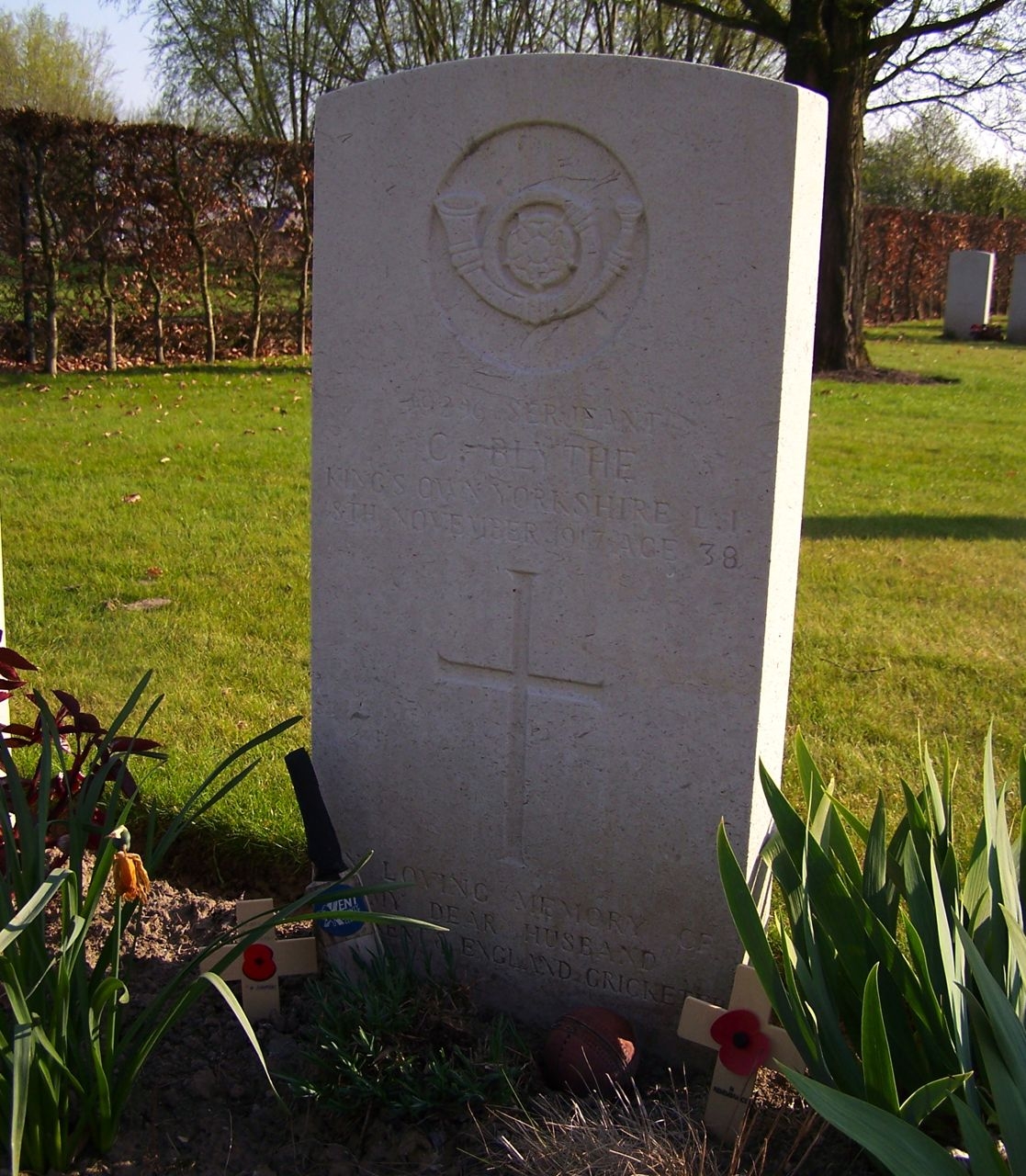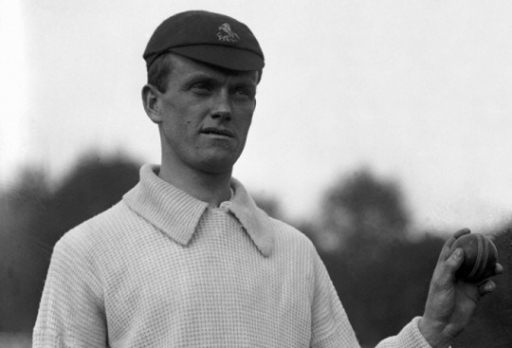CN contributor Andy Moreton pays tribute to the champion cricketer, Colin Blythe, on the centenary of his death at Passchendaele in the First World War.
On a white stone plinth at Kent’s county ground in Canterbury, Colin Blythe is remembered:
‘He was unsurpassed among the famous bowlers of the period and beloved by his fellow cricketers.
Indeed he was. When the cricketers’ Bible, Wisden, grimly chronicled the roll-call of players who had fallen in the Great War, his name was foremost:
‘The news that Blythe had been killed was received everywhere with the keenest regret … he will live in cricket history as the greatest Kent bowler of modern days.’
There followed several pages of Blythe’s remarkable achievements: eight wickets or more in an innings (15); thirteen wickets or more in a match (15); bowling through both completed innings (5). Wisden tells us that he bowled for an hour for one run, bowled nine consecutive maidens, took four wickets in five balls.
Outstanding
Yet this outstanding career had begun quite by chance. In the summer of 1897, the 18-year-old Colin Blythe, known to his friends and colleagues as Charlie, was on a day off from the sweated labour of the engineering workshop at the Woolwich Arsenal. He decided to stop by the Rectory Field in Blackheath, where Kent were playing Somerset. One of Kent’s senior players was looking for someone to bowl to him and Blythe stepped forward. His natural ability was noted immediately and before long he was making his way through the recently established Kent nursery. At 20, he was called up to the 1st XI and promptly took a wicket with his first ball.
Blythe was a left arm spinner. In a career lasting from 1899 to the start of the First World War – often referred to as the Golden Age of Cricket – he took just over 2,500 wickets at about 16 apiece. His annus mirabilis was 1909 when he took 215 wickets at 14.5. Even at a time when pitches were open to the elements and often favoured the bowler, this was an extraordinary record. He helped Kent to four county championships.
Why, then, is Blythe not spoken of in the same breath as Trueman, Larwood, Laker and Botham as one of the greatest England bowlers in history? The fact is that he was by no means as successful when called up by England as he had been on the county circuit (although he excelled against the South Africans in 1907). A history of mild epilepsy and a stress-related condition made playing at the top level an ordeal for him Even so, 100 wickets in 19 Tests is a far from shabby return.
Enlisted
Despite the war clouds gathering in the summer of 1914, cricket in England staggered on until the end of the season. Colin Blythe, in spite of his health issues, enlisted with the Kent Fortress Royal Engineers, and his work in the early years was mainly coastal defence. He was able to keep his cricket going with appearances for the regimental team and other representative sides. Eventually he was drafted into 12th battalion, the King’s Own Yorkshire Light Infantry (12/KOYLI), where his knowledge as an engineer would be valuable. He sailed for the Front on 25 September 1917 to assist 12/KOYLI in the building and maintenance of railway lines during the Third Battle of Ypres campaign.

Colin Blythe’s grave at CWGC Oxford Road Cemetery, Ypres (Image courtesy of Commonwealth War Graves Commission)
Blythe was now 38, and had decided that he wouldn’t be going back to the professional circuit after the war – he’d signed up to become a cricket coach at Eton. In the event, the future he’d planned for himself was not to be.
On the evening of 8 November 1917, while Serjeant Blythe and his colleagues were working on the Forest Hall track near Passchendaele, a German shrapnel shell burst behind the allied line. Five men were killed, including Blythe. In a glass case in the pavilion at Canterbury are mementos of that fateful moment which are almost too painful to behold: the two wallets he was carrying in his breast pocket. The shrapnel has pierced them and made a sorry mess of a little photograph of his beloved wife, Janet. The feeling back home was summed up by the inimitable prose of Neville Cardus:
A shell made by somebody who had never known cricket and directed by eyes
that had never seen a Kent field, fell on Blythe and killed him. On any of those
quiet, distant, delicious afternoons at Canterbury, when Blythe bowled his gentle
spin and the summer blossomed all around, could even the ironic gods have
discerned the course of events which was to take Blythe over the seas and leave
him there part of the foreign dust?’
Colin Blythe is buried at Oxford Road CWGC cemetery near Ypres. In 2009, when the England team visited, a stone cricket ball was laid at the grave. ‘It was a deeply moving and humbling experience’, said the then captain, Andrew Strauss. On his gravestone, Blythe’s age was erroneously given as 39; the plinth at Canterbury originally bore the wrong date of death: November 18. These have now been amended – after all, for Colin Blythe accuracy was everything.
[With thanks to Christopher Scoble, writer of the biography ‘Colin Blythe, lament for a legend’ (Sports Books Ltd., 2005) for advice and permission to use extracts from his excellent book.]
Kent Cricket Club is marking the Centenary of Colin Blythe’s death today, November 8, with a rededication of his memorial at the county ground in Canterbury.
© Centenary News & Author
Images courtesy of Kent County Cricket Club (Colin Blythe); Commonwealth War Graves Commission (Oxford Road Cemetery)
